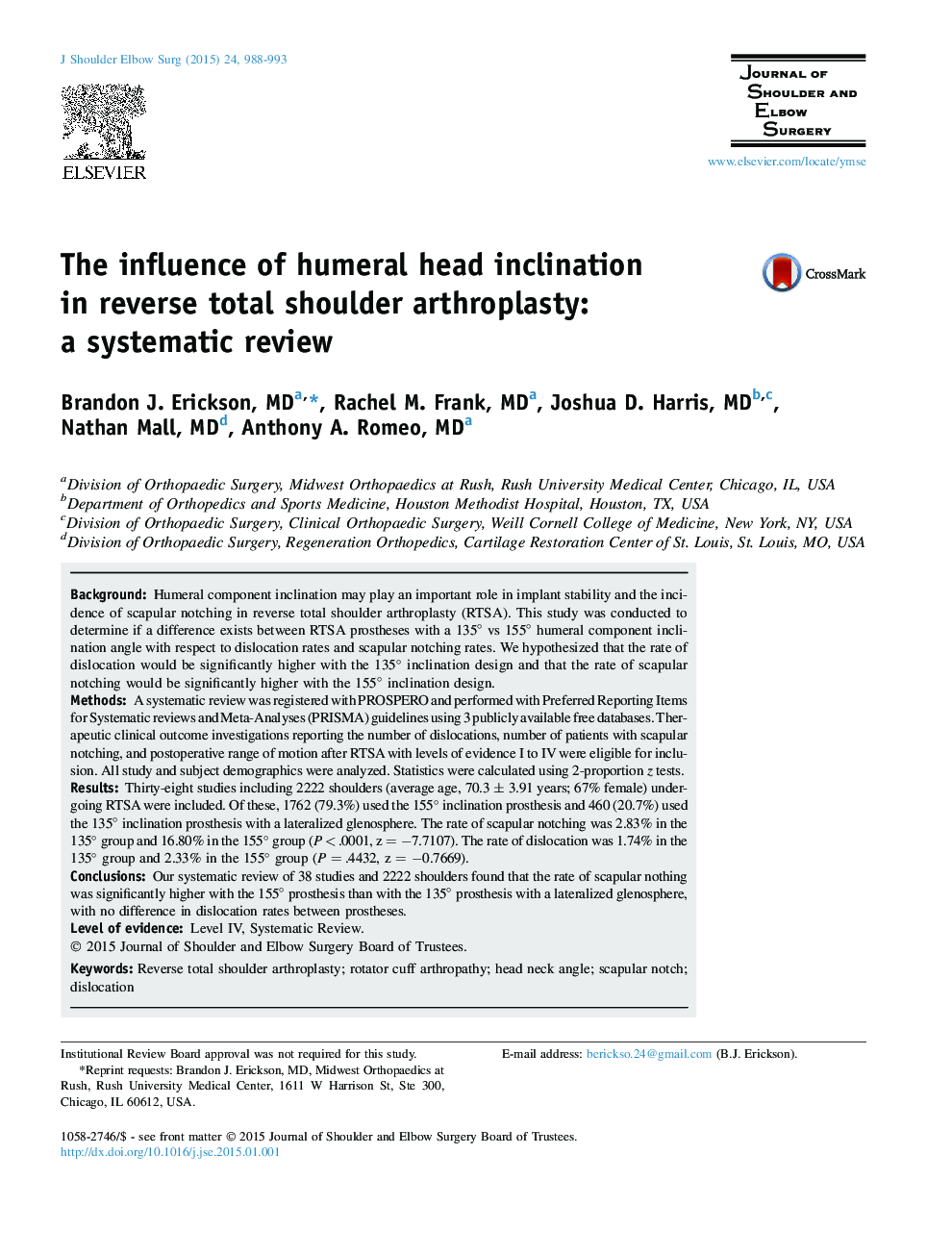| Article ID | Journal | Published Year | Pages | File Type |
|---|---|---|---|---|
| 4073179 | Journal of Shoulder and Elbow Surgery | 2015 | 6 Pages |
BackgroundHumeral component inclination may play an important role in implant stability and the incidence of scapular notching in reverse total shoulder arthroplasty (RTSA). This study was conducted to determine if a difference exists between RTSA prostheses with a 135° vs 155° humeral component inclination angle with respect to dislocation rates and scapular notching rates. We hypothesized that the rate of dislocation would be significantly higher with the 135° inclination design and that the rate of scapular notching would be significantly higher with the 155° inclination design.MethodsA systematic review was registered with PROSPERO and performed with Preferred Reporting Items for Systematic reviews and Meta-Analyses (PRISMA) guidelines using 3 publicly available free databases. Therapeutic clinical outcome investigations reporting the number of dislocations, number of patients with scapular notching, and postoperative range of motion after RTSA with levels of evidence I to IV were eligible for inclusion. All study and subject demographics were analyzed. Statistics were calculated using 2-proportion z tests.ResultsThirty-eight studies including 2222 shoulders (average age, 70.3 ± 3.91 years; 67% female) undergoing RTSA were included. Of these, 1762 (79.3%) used the 155° inclination prosthesis and 460 (20.7%) used the 135° inclination prosthesis with a lateralized glenosphere. The rate of scapular notching was 2.83% in the 135° group and 16.80% in the 155° group (P < .0001, z = −7.7107). The rate of dislocation was 1.74% in the 135° group and 2.33% in the 155° group (P = .4432, z = −0.7669).ConclusionsOur systematic review of 38 studies and 2222 shoulders found that the rate of scapular nothing was significantly higher with the 155° prosthesis than with the 135° prosthesis with a lateralized glenosphere, with no difference in dislocation rates between prostheses.
